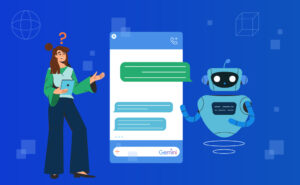In this information age, Facebook is perhaps the most preferred social media platform for digital advertisers. It has has more than two billion monthly active users across the globe which makes it an easy choice for advertisers. But the question is how can one use Facebook for advertising? It’s for everybody to use, then why some brands succeed, while others faill miserably?
The point is, just because you have people on Facebook doesn’t mean that posting an ad will help your business. You need something special with an extra edge to grab your potential customer’s attention. And that’s exactly what we are going to learn here. So, let’s start with this high converting Facebook ad’s guide.
But before going any further, let’s understand, what is conversion?
A conversion is when someone performs a desired action after looking at your ad. It could be visit to your website page, reading your blog and then filling contact form to contact them, installing an app, ordering a purchase, or just signing-up. For example, if you are advertising to install the app, and if someone downloads, it’s considered as conversion. Similarly, if you are looking for your audience to sign up for a webinar, and someone does it, it’s also considered a conversion.
In short, the conversion is anything that gives you information about your potential customer and helps you navigate them through the sales funnel.
It is different from a click on your blog, sales page, or if one simply watches a video that feeds you no information about the customer, unless it is linked by a goal set-up in your Google Analytics account.
Moving forward, here is a list of best practices which can help your drive maximum returns from your Facebook ads. This covers all the activities you must undertake to make your ads sustain in the highly competitive market.
Know Your Audience and Their Pain Points
You might have come across many articles and blogs stressing the importance of defining audience right from the start. And I’ll state the same all over again. Make sure to start with making targeted customer profiles.
Now, you would ask, how does that help?
Let’s take an example to understand that better. Assume that you are offering a course for time management, and if you advertise is simply by saying ‘best time management course’, there’s a chance that hardly someone glances over it.
But when you stress on the pain points of your customers saying, ‘Is working from home getting difficult for you? Is managing time for office projects and personal work difficult?’ When you talk about the problems your customers are facing and solutions you offer, people are more responsive to such advertisements. And that’s just knowing your audience and their pain points. And so, identification of your audience problems should be your first step.
Choose Your Objective
Without a marketing objective, you wouldn’t have a target to focus on while creating the ads. So, having an objective right from the beginning is necessary. In fact, even Facebook asks you to choose the objective before starting with the Ads.
But make sure, you do not limit the marketing goal only to more traffic. Use other goals from Facebook as leverage too, like app installs, brand awareness, engagement, reach, store visits, lead generation, etc.
So, let’s take a look at the top three objectives you can choose while creating an ad:
1. Awareness
When you opt for ads that will create awareness regarding your brand, you choose either brand awareness or reach as a goal. It means you are targeting to attract potential customers to know more about your business. We also call this advertising the top of the funnel marketing strategy.
2. Consideration
If your objective is a consideration, it means you are trying to drive more engagement with your potential customers. There are several ways to get this objective on Facebook like:
- Traffic
- App installs
- Video views
- Messages
- Likes, shares, and comments
- Lead generation
This is ideally the stage where you engage and educate your target audience. It is also known as the mid of the funnel marketing strategy.
3. Conversion
This objective especially focuses to get your audience to take an action. So, here your Facebook ad goal will be conversions, catalogue sales, and store visits. This stage is targeted to an audience who already know your brand well and are ready to make a commitment and buy your products or services. We also call it the bottom of the funnel marketing strategy.
Each stage of the funnel is important. You need to navigate your potential customers and take them on a journey to help them cross the commitment line. This is why creating ad funnel is necessary and so is to choose your marketing objective.
Ad Placement
Thanks to mobiles, the most important question while designing an ad is the placement it will be fit for. Because an ad that looks perfect on the desktop mostly won’t make a cut on the mobile devices. So, what should you do? Simple, research, choose and decide.
1. Desktop News Feed
This is the standard go-to option and gets better conversion odds. You also get more room to get your creativity flowing with larger images and ad copy. But the problem is with competitive space and expensive prices.
So, as a rule of thumb, you can keep this placement aside for consideration or conversion phases. Whereas for the awareness phase, this space is a bit too costly.
2. Desktop Right Column
These ads take a back-seat as they are slightly out of sight. But that doesn’t mean it is wasted space, especially when someone knows you already.
For example, I prefer my daily evening coffees at CCD, and if I see a CCD ad on my computer screen, it instantly grabs my attention to check if they are offering something new or free beans for redemption.
So, this space is best if you are retargeting your customers. But not a great place to go for brand awareness.
3. Mobile Device
This is the space to target for awareness. People use their phones to spend their free time and scroll through FB pages. And this is the best time to make people aware of your products or services. After all, people tend to see things on phone and buy it from their PC later.
Design Ad
Now that you are done with all the technical aspects, it’s time for the fun designing part – the step that will actually gain your audience’s attention. Although it’s a difficult task to create a copy with all the elements of a good ad, the process can be easier if you follow these steps.
1. Strong Value Proposition
Your creativity starts right here. Starting with a strong value proposition is important for seeking the attention of your audience, especially if you are looking for awareness. But the purpose of the value proposition is more than just that. It helps in audience targeting. Facebook uses this information to calculate your relevance score. And according to this score, it will show the ad to a particular set of people.
So, here’s how you should start with your strong value proposition.
- Headline: The big promise of solving the problem for your customers.
- Supporting Ad Copy: Add the benefits and explain how effective, quick, and easy is the process.
- CTA: Finally, don’t forget the call-to-action button to attain the value you are promising.
2. Image
Every second, around 5000 images are shared on Facebook. The reason? We don’t have time to read. And our brain hardly consumes milliseconds to process an image. Hence, we prefer images.
Now, you can’t just go around including any pictures in your ad. Instead, to optimise experience of the user, you need to tell a story through the images you use.
So, here are a few tips for you:
- Use contrasting images. Like the products on stark different backgrounds.
- People love authenticity over professional, polished pictures.
- Use microsecond expressions
Also Read: 20 Go-To Websites for Beautiful, High Res & Free Stock Images
3. Headline
The tried and tested formula to hit more conversions is to use the perfect headline. But how do you know which is the perfect one? Try the A/B testing method for it and change it a few times to hit the sweet spot.
And to help you, here are some tips for you:
- Highlight your unique way of solving the problem
- Tell them the secret of ‘hacks’
- Try giving them a teaser and use a cliff-hanger
Some Additional Tips
Now that we are done with the main part of creating a Facebook Ad for high-conversions, let’s take a look at a few more tips to make the ad copy creative and more appealing.
- Always keep the ad copy short. Remember it’s an advertisement and not a blog.
- Try giving your audience fewer choices. After all, you might have heard about decision fatigue, right?
- While mentioning discounts, use rupees instead of a percentage. Or simply use both.
- Use overlay text on the images section. Why use only pictures in that section?
- Try using the product in action with help of the carousel ad format.
- Real, live people in the picture have more impact than just products and sceneries.
- Always use A/B testing on your ad copy to know what works best for you. This will help in the future while creating new ads.
Final Thoughts: Be Creative but Also Strategic
Facebook Ads are difficult to pull off, especially with so many variables. A lot of time, as well as money, maybe wasted before you get to any real conversions with the trial-and-error method. But you can avoid all this by opting for the tried and tested method. Start with your audience and objectives. Then know your ad placement. And finally, go for a creative ad copy to translate your message into conversions.





